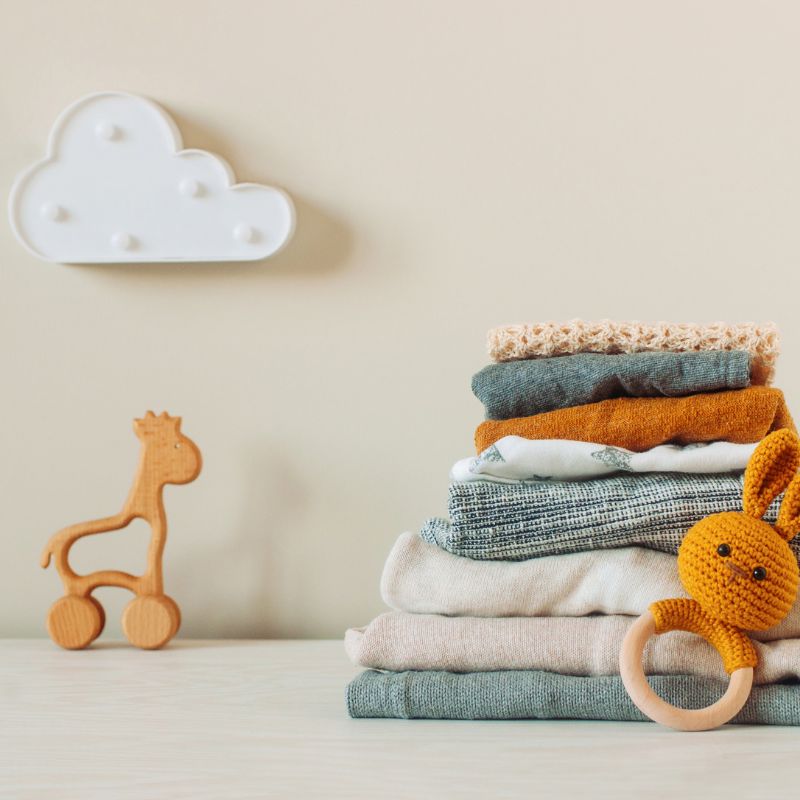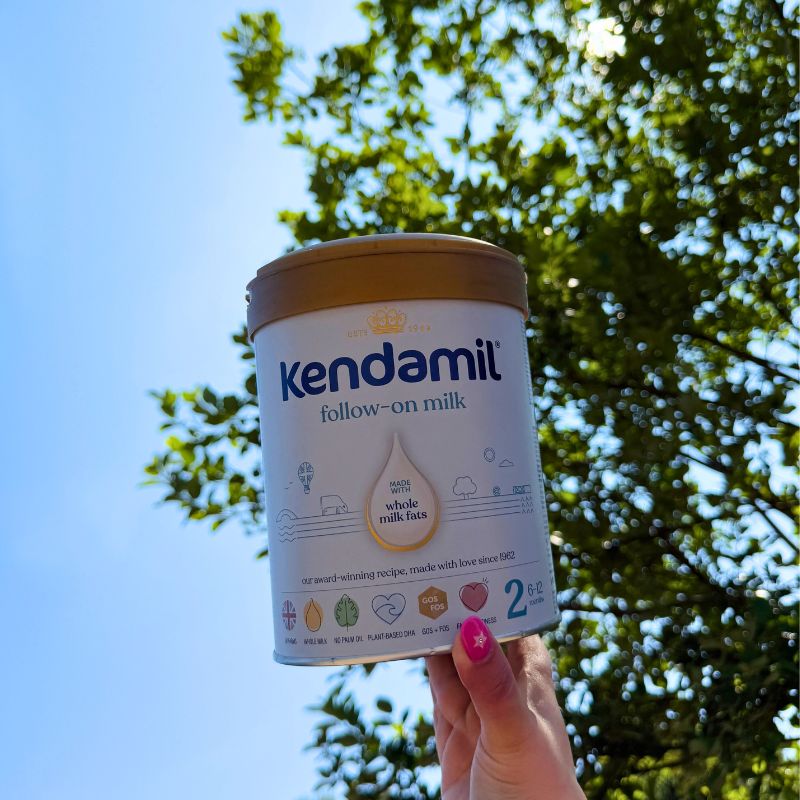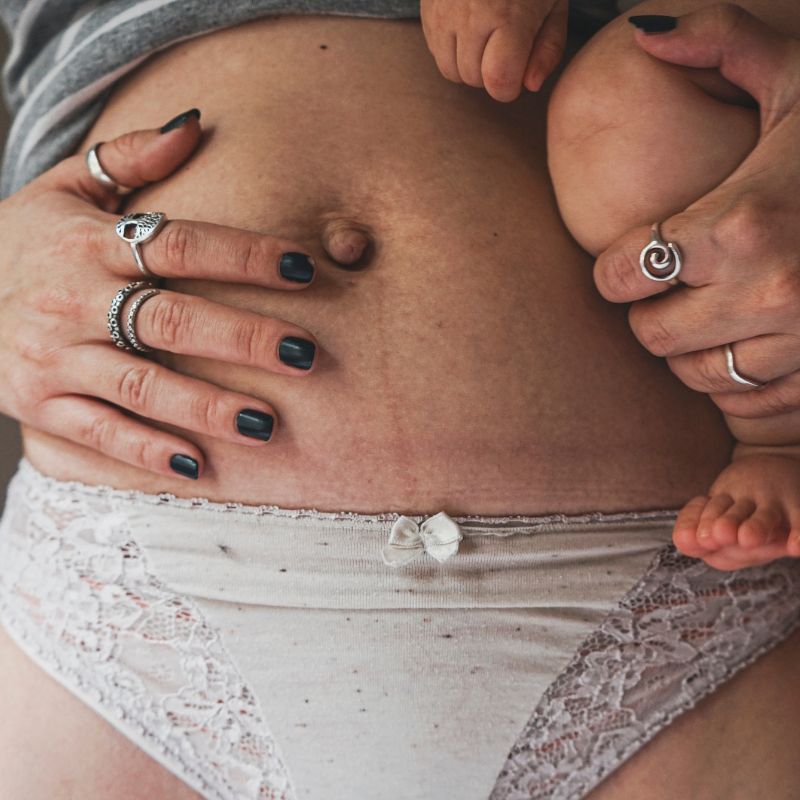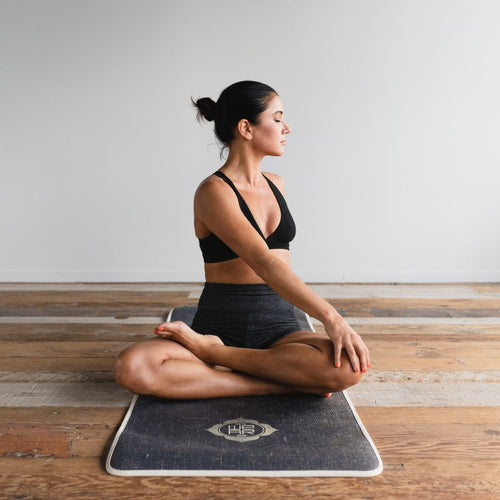Whether you're a first-time parent or a seasoned pro looking for a refresher, join us as we journey through the newborn phase together, focusing on what to expect and tips to navigate your newborn’s needs. From how often to feed a newborn, to how often to bathe a newborn we’ve got your questions answered.
Newborn Care Basics
Those first few days to weeks with your newborn are going to be a whirlwind. A lot of it will revolve around getting to know your little one, as well as a lot of feedings and nappy changes, but here are some of the basics to help you adjust and feel at ease.
Nappy Changes:
Changing your little one's nappy for the first time can be daunting at first, but with a little practice, it will become second nature before you know it! You might end up changing your newborn's nappy up to 12 times a day at first, then over time, this will reduce to 6-8 times a day. Remember, changing a nappy is not only about hygiene but also an opportunity for bonding with your baby.
- Set up a changing station or nappy caddy with all your essentials; a changing mat, cotton wool, a bowl for warm water, nappies and rash cream. It’s also a great tip to keep a spare bodysuit at hand too.
- Start by laying your baby on a clean, soft surface, ensuring they are secure and comfortable.
- Undo the tabs of the nappy gently, taking care not to disturb any mess.
- For girls, wipe gently from front to back to prevent any potential infections, while for boys, avoid pulling back the foreskin forcefully.
- Clean your little one thoroughly but gently using wipes or warm water and cotton wool.
- Allow the skin to dry completely before applying any rash cream, if necessary, and then securely fasten a fresh nappy, making sure it's snug but not too tight. You can always allow some nappy-free time to help your little one’s skin breathe. Changing their nappy immediately when wet or soiled will help prevent rashes from occurring.
- Dispose of the used nappy hygienically and wash your hands thoroughly.
Understanding Baby Poo:
- Colour: In the initial days after birth, your baby's first bowel movements will consist of meconium, a greenish-black, sticky substance. This is completely normal and is a sign that your baby's digestive system is functioning as it should. Within a few days, you will notice a transition in the colour of your baby's stool from greenish-black to a yellowish hue. This change indicates that your baby's digestive system is maturing and adjusting to feeding.
- Consistency: The consistency and aroma of your baby's stool may vary depending on whether you are breastfeeding or formula-feeding. Breastfed babies typically have runnier stools, while formula-fed babies may have firmer, more ‘aromatic’ stools. Both are completely normal! Soft stools are a sign of a healthy bowel movement in babies.
- Frequency: Initially, it's common for newborns to have bowel movements up to six times a day. However, this frequency may decrease over time as your baby's digestive system matures.
- If you have any worries or concerns about the colour, consistency or frequency of your little one’s poos, be sure to ask your healthcare provider for advice.
Umbilical care:
One of the important aspects of caring for your newborn is proper umbilical cord stump care so it can heal properly. It’s common for it to fall off after around a week, but can take as long as two weeks!
- Keep it Clean and Dry: This is crucial for preventing infection. Use a clean, damp cloth to gently wipe around the base of the stump, being careful not to tug or pull on it. Allow the stump to air dry completely after each cleaning. When changing baby’s nappy, fold down the front to allow air to circulate.
- Choose Sponge Baths: While your baby's umbilical stump is healing, opt for sponge baths instead of tub baths to avoid over-wetting the area.
- Be Aware of Normal Healing: It's normal for a small amount of blood to be present around the base of the umbilical stump as it heals. However, if you notice excessive bleeding, swelling, oozing of pus, or a foul odour coming from the stump, it's important to consult your healthcare provider.
Handling Your Newborn:
Handling your newborn may feel daunting at first, but with a few simple tips, you'll soon feel more confident and comfortable.
- Confidence is Key: While it's natural to feel nervous about handling such a delicate little being, remember that you are capable and equipped to care for your baby. Confidence will come with practice and experience.
- Support the Head and Neck: Your baby's neck muscles are still developing, so it's important to always support their head and neck when holding them. Cradle your baby's head in the crook of your arm or use your hand to support the back of their neck while cradling them.
- Clean Hands: Before you or anyone holds your baby, always make sure your hands are washed and clean. This helps prevent the spread of germs and reduces the risk of infection for your newborn.
- Gentle Touches: Your newborn's skin is delicate, so be sure to use gentle touches when handling them. Avoid rough handling or squeezing, and instead, use soft strokes and cuddles to comfort and soothe your baby. This is especially important to emphasise to young siblings who may want to hold your baby.
Bath Safety Basics:
Bathing your baby can be a wonderful bonding experience, but it's essential to prioritise safety and comfort throughout the process:
- Supervision is Key: Always supervise your baby during bath time. Even if you have older siblings, remember that they are not substitutes for adult supervision. Accidents can happen quickly, so never leave your baby unattended in the bath, not even for a second.
- Preparation: Before starting the bath, ensure the room is comfortably warm to prevent your baby from getting cold. Gather all bath-time essentials, such as towels, washcloths, and gentle baby soap or shampoo, within arm's reach to make it easier for you.
- Water Temperature: Use warm water for your baby's bath, ideally between 37-38 degrees Celsius. You can test the water temperature by either dipping your wrist or elbow into the water or using a bath thermometer.
- Cleansing Products: During the first month, it's best to avoid adding cleansers or soaps to your baby's bath water. Plain warm water is sufficient for cleaning their delicate skin. Introducing cleansers too early may disrupt the natural balance of your baby's skin.
- Handling Your Baby: When placing your baby into the bath and lifting them out, always support their head and upper arm to ensure their safety and comfort. Gently swish the water around your baby, keeping their head elevated to prevent water from getting into their ears, nose, or mouth. They can be very slippery so hold on tight.
- Post-Bath Care: After the bath, consider giving your baby a gentle massage using baby-safe oil or lotion. However, wait until your baby is at least a month old before introducing any oils or lotions to their skin. This can help soothe and moisturise their skin while promoting relaxation.
- Consider Shared Baths: If your baby is apprehensive about bath time, consider joining them in the bath. This can provide comfort and reassurance, but always ensure that the water temperature is safe for both you and your baby.
What is the typical feeding schedule for a newborn?
Feed Frequency
Newborns march to the beat of their own drum and they’ll want to be fed around the clock. At times, it might feel non-stop but as they mature, it’ll become less frequent. This is because when babies are born, their stomachs are about the size of a marble, so they feed little and often, around every 2-4 hours to start with. In the first few weeks, it's typical for a baby to feed at least 8 to 12 times, or more, within 24 hours. When it comes to breastfeeding, it's impossible to over-feed your baby, so don’t worry if it feels like they’re feeding non-stop!
When To Feed
Calm and relaxed moments are ideal for feeding your baby. Look out for signs that they might be hungry, like fist-sucking, lip-licking, wriggling and if they’re trying to get to the breast. If mum is breastfeeding, it’s always a good idea to let baby feed completely from the breast, as the fattier milk tends to be towards the end.
Breastfeeding tips and advice
The WHO and UNICEF, as well as the NHS, recommend exclusive breastfeeding for the first six months of your little one's life. Breastfeeding is a shared journey of learning for both mum and baby, so in order for this to get off to the best start, be sure to seek out lots of breastfeeding support! Contact your healthcare professional, as they may be able to point you in the directions of groups and charities that can help. Proper latching can make feeding a more comfortable experience, preventing tender or sore nipples.
Step-By-Step Guide
- Hold your baby closely, aligning their nose with your nipple.
- Tilt your baby’s head back slightly so their upper lip grazes your nipple. This encourages a wider mouth opening.
- As they open up, their chin should touch your breast first, allowing the tongue to cover more breast.
- A well-latched little one will have their chin pressed into your breast, nose free, mouth open wide with plump, round cheeks as they feed.
There are lots of breastfeeding positions to try, but the most popular ones are cradling your little one with both arms, or holding your baby in a “rugby ball” position under your armpit. Check out our blog on breastfeeding positions to help you out!
Breastfeeding can have its challenges, like sore nipples, issues with latching, engorged breasts and sometimes problems with milk supply. These aren’t just physical challenges, they can be really difficult emotionally too! Your community midwife will be able to help you with breastfeeding support, but be sure to check out these helpful resources too as well as our blog on Overcoming Breastfeeding Challenges.
If you decide to stop breastfeeding or you want to move onto combination feeding, we would recommend getting support and guidance from your midwife or health visitor.
Newborn Sleep Patterns & Cycles
The world of newborn sleep can be both fascinating and confusing for new parents. Newborns have their unique rhythm, shaped by their developing brains and the basic needs of their tiny bodies.
- Sleep Cycles: Newborns spend a substantial portion of their day snoozing, typically between 8 to 18 hours in total. A typical sleep cycle is around 50 minutes, but every baby is unique - some might be shorter or longer!
- Night & Day Confusion: Newborns come into the world without a built-in sense of day or night, often leading to the longest stretches of sleep occurring during the daytime. However, as they grow and adapt, more consistent sleep patterns tend to emerge around the three-month mark, alleviating some of the confusion.
- Handling Night Time Wake-Ups: When faced with night time wake-ups, it's essential to approach them with patience and understanding. Remember, frequent waking is entirely normal for newborns, driven by their small stomachs and the need for regular feeds. As your baby grows, longer sleep periods will gradually develop, marking important milestones in both brain and body maturation. Expect to see longer sleep periods by the three to six-month mark.
- Soothing Techniques: Start by recreating the comforting environment of the womb through swaddling and white noise. These simple yet effective methods mimic the snug feeling and familiar sounds of the womb, lulling your baby into a peaceful slumber. You could also try gentle, bouncy dance movements or a dummy to ease restlessness.
For more top tips on sleep, be sure to check out our Ultimate Guide to Baby Sleep!
How can I bond with my newborn during the first week?
The first week with your newborn is an incredibly special time, filled with tender moments and opportunities to foster a deep bond.
- Skin-to-Skin Contact: Embrace the power of skin-to-skin contact, which promotes bonding and regulates your baby's temperature, heart rate, and breathing. This is a really great way for the non-birthing partner to bond with baby also.
- Eye Contact and Gentle Touch: Engage in meaningful interactions by maintaining eye contact with your baby and responding to their cues with gentle touches. Your newborn will find comfort and security in your loving gaze and tender caresses, strengthening your emotional connection.
- Talking and Singing: Share your voice with your newborn by talking, singing, or reading aloud. Your soothing words and melodious tunes provide reassurance and stimulation, helping your baby feel safe and engaged in their new environment.
- Baby-Wearing: Consider baby-wearing as a practical and nurturing way to bond with your newborn. Kangaroo care, where your baby is held close to your body in a carrier or wrap, fosters a sense of security and closeness while allowing you to go about your daily activities. Again another opportunity for the non-birthing partner to bond with baby.
- Respond Promptly to Your Baby's Needs: Pay attention to your baby's cues and respond promptly to their needs for feeding, changing, and comfort. By meeting your newborn's needs in a timely and sensitive manner, you establish trust and security, laying the groundwork for a strong bond.
Now you know the basics of caring for your newborn, you can relax and enjoy the snuggles and smiles of your newest family member. You’ve got this!

















